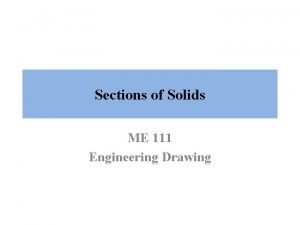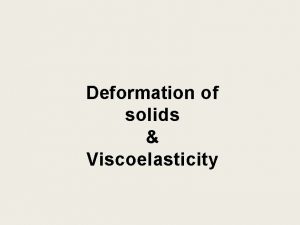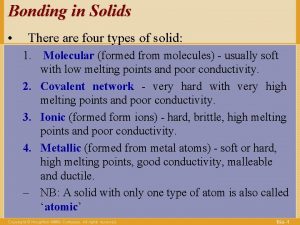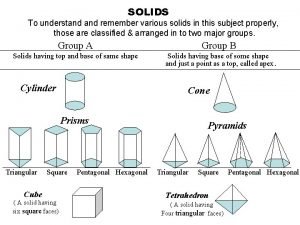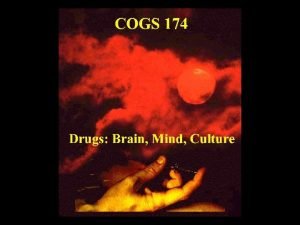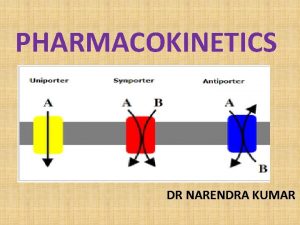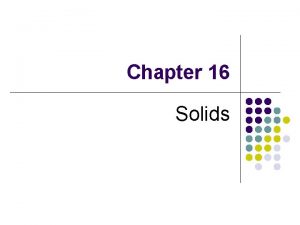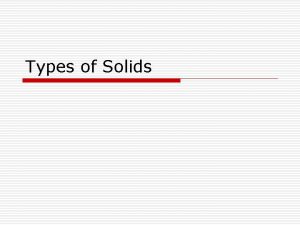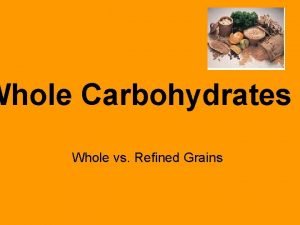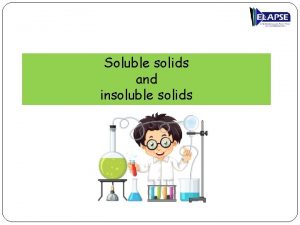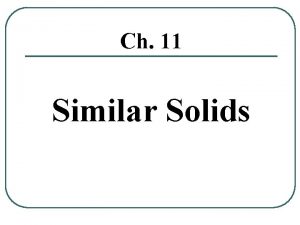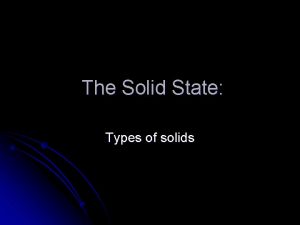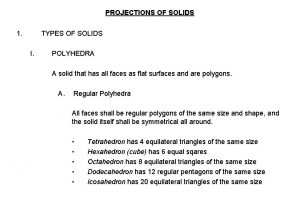Types of Solids A Whole New Order Solids

















- Slides: 17

Types of Solids A Whole New Order

Solids Crystalline Solids- have a regular repeating arrangement of their particles. Salts, Sugars, Metals Amorphous Solids- have no regular repeating arrangement of their molecules Common glass, several polymers.

Crystalline Structure

Amorphous

Amorphous solids Amorphous solids, due to a lack of arrangement of molecules, will actually flow, slowly. If you look at very old windows, you will find there is more glass at the bottom than at the top. That is because the glass flowed down. You can also see the same effect with Silly putty.

Making solids… Technically, anything can be made amorphous. A rapid cooling from liquid to solid makes it amorphous. The particles just don’t have time to arrange themselves in a pattern. A slower cooling or heat treatment can make some amorphous solids crystalline.

Safety Glass Cars don’t use common glass for their windshield because it breaks into dangerous shard when it breaks. Instead they use a heat strengthened glass, one that is slowly cooled to a solid to allow for a better arrangement of molecules, so that when it breaks into less dangerous “dice”.

Glass Safety Glass

Back to crystalline solids Crystalline solids can be made up of 3 different things Ionic Solids –made of ions Molecular Solids- made of molecules held together by covalent bonds Atomic Solids- Made of atoms

Ionic Compounds have very high melting points. Sodium Chloride melts at 801 o. C That is because every single negative particle is attracted to every single positive particle and vice versa. This is in essence a very strong intermolecular force.

Ionic Solids Ionic solids are brittle. When they break their crystal structure shows, as they break into similar shapes. Na. Cl breaks into spheres. Ca. Cl 2 into cubes

Conduction of electricity Electricity is a flow of electrons Anything that allows electrons to easily pass through will be a good conductor of electricity. While in solids, electrons can only hop from ion to ion. This is a very slow process so solid ionic compounds are not good conductors.

Melting Ionic Compounds and Ionic Solutions If you melt an ionic compound, then the ions can move. Electrons can now easily move through the substance. If you dissolve an ionic compound, the ions are also free to move. Therefore, liquid ionic compounds and ionic solutions are good conductors.

Molecular Compounds have much lower melting points. Several are liquids (water) or gases (carbon dioxide) at room temperature.

Molecular compounds are not good conductors of electricity.

Atomic Solids/Elements Solid nonmetals and metalloids commonly form very large molecules. A diamond (any size) could actually be viewed as one molecule of all carbon. These solids are called network covalent solids. They have high melting points and don’t conduct electricity.

Allotopes of Carbon Graphite Diamond
 Whole school whole community whole child model
Whole school whole community whole child model Massed practice
Massed practice Via optica
Via optica A whole new approach
A whole new approach Classification of solids
Classification of solids Types of solids
Types of solids True shape in engineering drawing
True shape in engineering drawing Types of deformation of solids
Types of deformation of solids Four types of solids
Four types of solids A pentagonal pyramid base 25mm side and axis 50mm long
A pentagonal pyramid base 25mm side and axis 50mm long Sections in engineering drawing
Sections in engineering drawing Example of natural order
Example of natural order First order change examples
First order change examples Buyer seller dyad
Buyer seller dyad Difference between 1st order and zero order kinetics
Difference between 1st order and zero order kinetics First order drug elimination
First order drug elimination Law is order and good law is good order
Law is order and good law is good order Order/properties-order
Order/properties-order






